The result of the operations of the First U.S. Army during the period covered by Normandy American Heroes new E-book / Hardcover:
- First United States Army Cross Channel Attack Operations (October 1943 – August 1944)
Will emphasize on the fact that the basic doctrines of troop leading and staff functioning as outlined in the First U.S. Army service manuals and as taught at the service schools were sound.
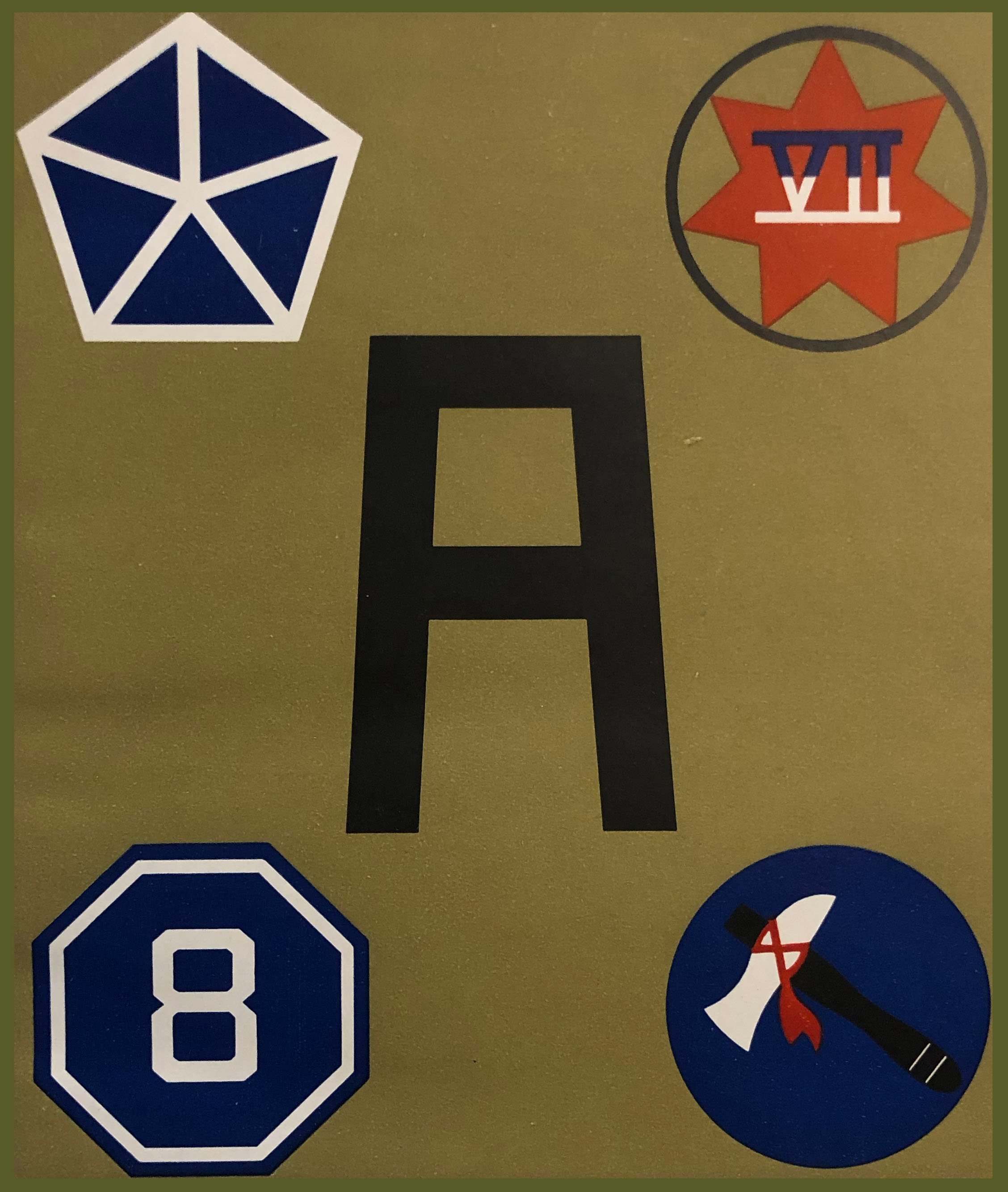
The degree of success attained continued to be dependent upon the ability of the individual commanders to apply these doctrines properly before and after Operation COBRA until the end of the war, May 7th, 1945.
You will note, while reading Normandy American Heroes new book, that too much stress couldn’t be placed upon the necessity of developing intelligent, aggressive troop leaders in all echelons. Not only must the leaders learn their own jobs thoroughly, but they had to be given ample opportunity to operate in the command capacity of the next higher echelon in order that qualified replacements were always available.
To use the battlefield as a schoolroom for the training of leaders was to sacrifice needlessly the lives of the First U.S. Army men. The habit of command and the technique of troop leading had to be learned thoroughly by all leaders prior to entry into combat. This took place back in England at the First U.S. Army Assault Training Center and during the amphibious rehearsals before D-Day.
As you will discover while reading our new book and expected by the First U.S. Army, the operations in the Cotentin Peninsula (Normandy, France) uncovered numerous lessons in combat operations worthy of consideration.
Many of these lessons, however, confirmed information already acquired in other theaters of operations.
Therefore, only thirteen lessons, which Normandy American Heroes believe merit special consideration, will be presented here based on operations that took place between June 6th and August 1st, 1944.
Outstanding among these was the urgent need for:
- the development of an aggressive spirit in the infantry soldier
- the practicability of large-scale airborne operations
- the development of technique in the use of close support aviation
- the development of infantry – tank coordination
- the hedgerow terrain effect on infantry tactics conducted in the “bocage” country of Normandy.
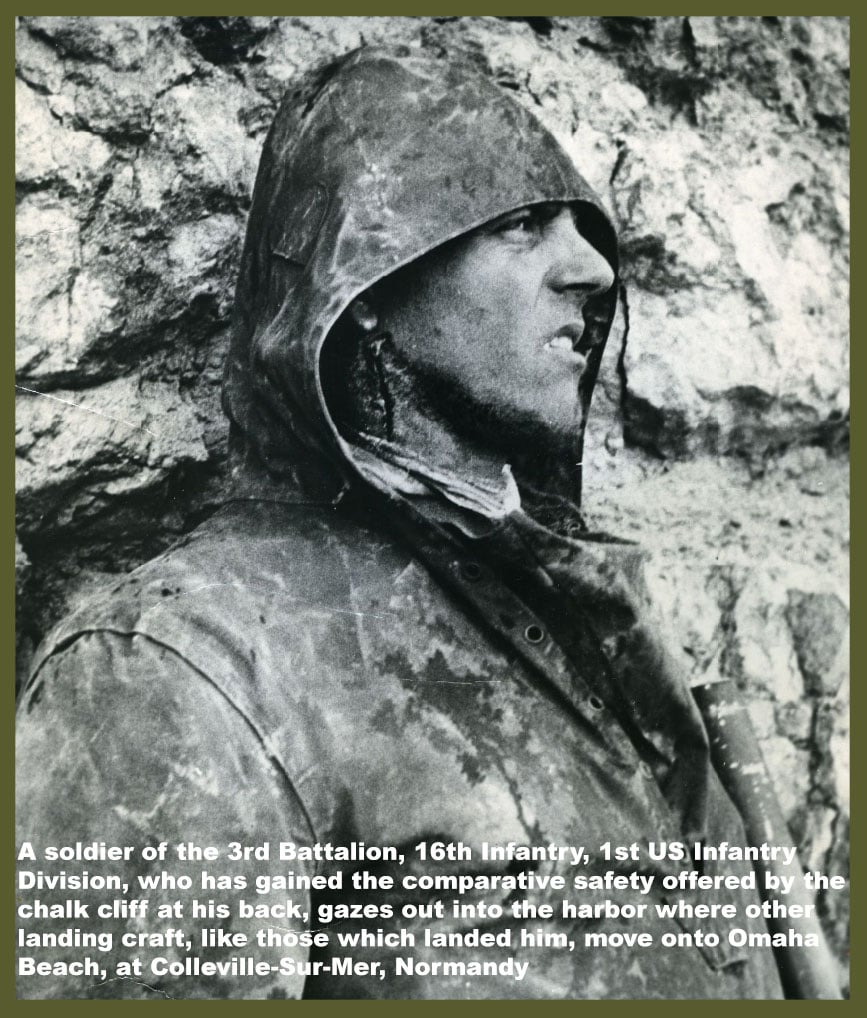
TACTICAL LESSONS LEARNED BETWEEN JUNE 6TH TO AUGUST 1ST, 1944
NEED FOR AGGRESSIVE SPIRIT
It was essential that infantry in training be imbued with a bold, aggressive attitude.
Many units did not acquire this attitude until long after their entry into combat and some never acquired it!
On the other hand, units containing specially selected personnel such as airborne and ranger units exhibited an aggressive spirit from the start.
The average infantry soldier placed too much reliance upon the supporting artillery to blast the enemy from positions opposing his advance. He had not been impressed sufficiently with his own potency and the effect of well-aimed, properly distributed rifle and machine gun fire.
The outstanding impression gained from a review of battle experiences is the importance of aggressive action and continuous energetic forward movement in order to gain ground and reduce casualties.
By way of emphasis, the following comments by officers and enlisted men of parachute units which achieved marked success in the fighting in Normandy were quoted:
“We have learned to keep moving forward. If there is anything the German hate it is close fighting. If he pins you down with sniper or machine gun fire, he will zero in on you with mortar and 88”.
“Move forward aggressively. The German is a poor marksman under the best conditions. In the face of heavy fire and an aggressive enemy his fire becomes highly ineffective”.
“Keep moving if you want to live”.
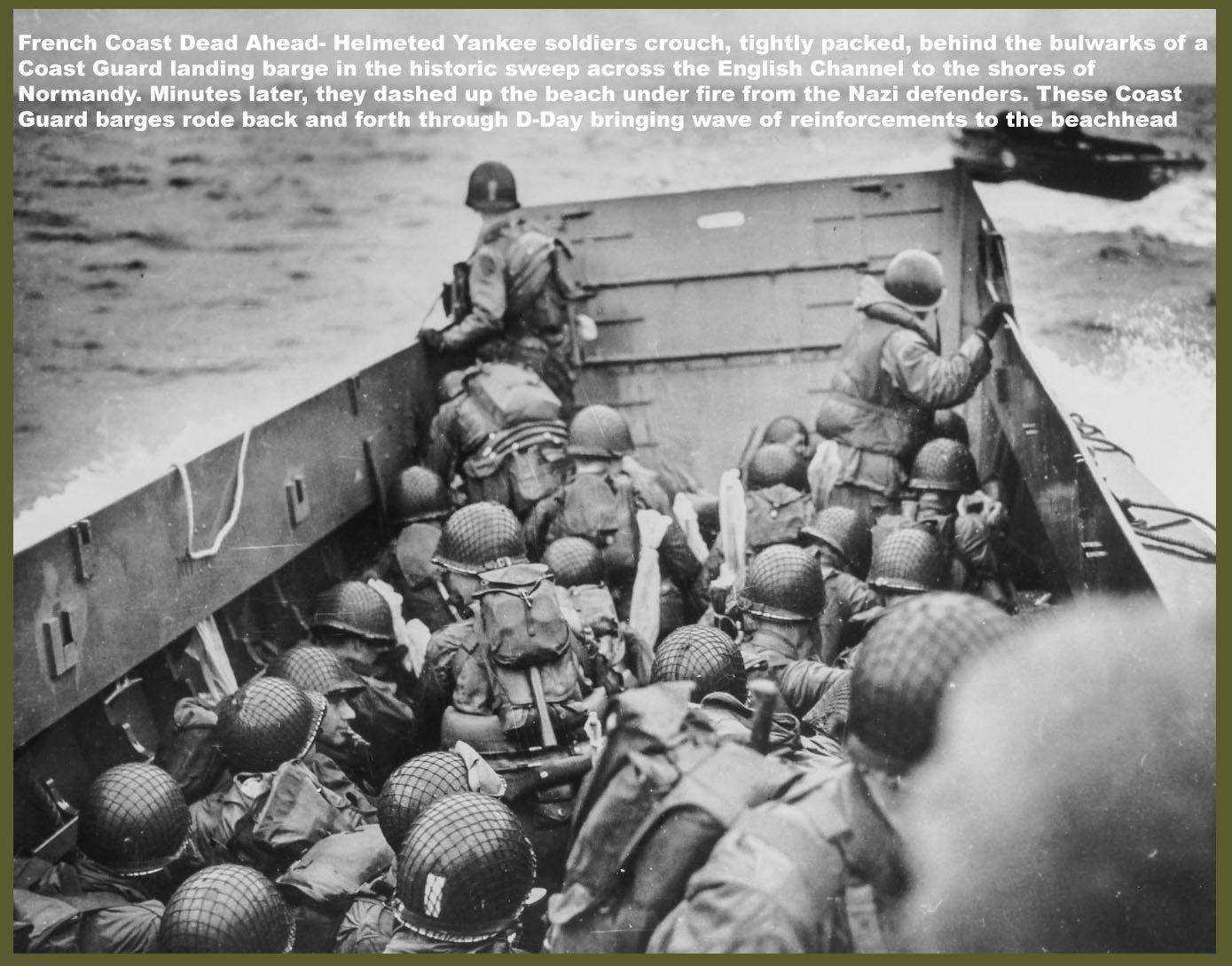
TACTICAL LESSONS LEARNED BETWEEN JUNE 6TH TO AUGUST 1ST, 1944
PRIORITY OF LANDING IN AMPHIBIOUS ASSAULT
The amphibious assault phase of the operation uncovered certain lessons applicable to this type of operation which deserved comment and further study that you will be able to discover in Normandy American Heroes book.
The problem of placing a properly balanced force from the standpoint of combat and service troops on a defended hostile shore was a difficult one and each situation, Utah and Omaha beach required its own solution.
In the assault phase priority was to be given to combat elements and the necessary support engineers.
Finally, in order to ensure rapid reduction of the beach defenses and capture of the initial beachhead line, sufficient combat elements had to arrive on shore before service troops landed.
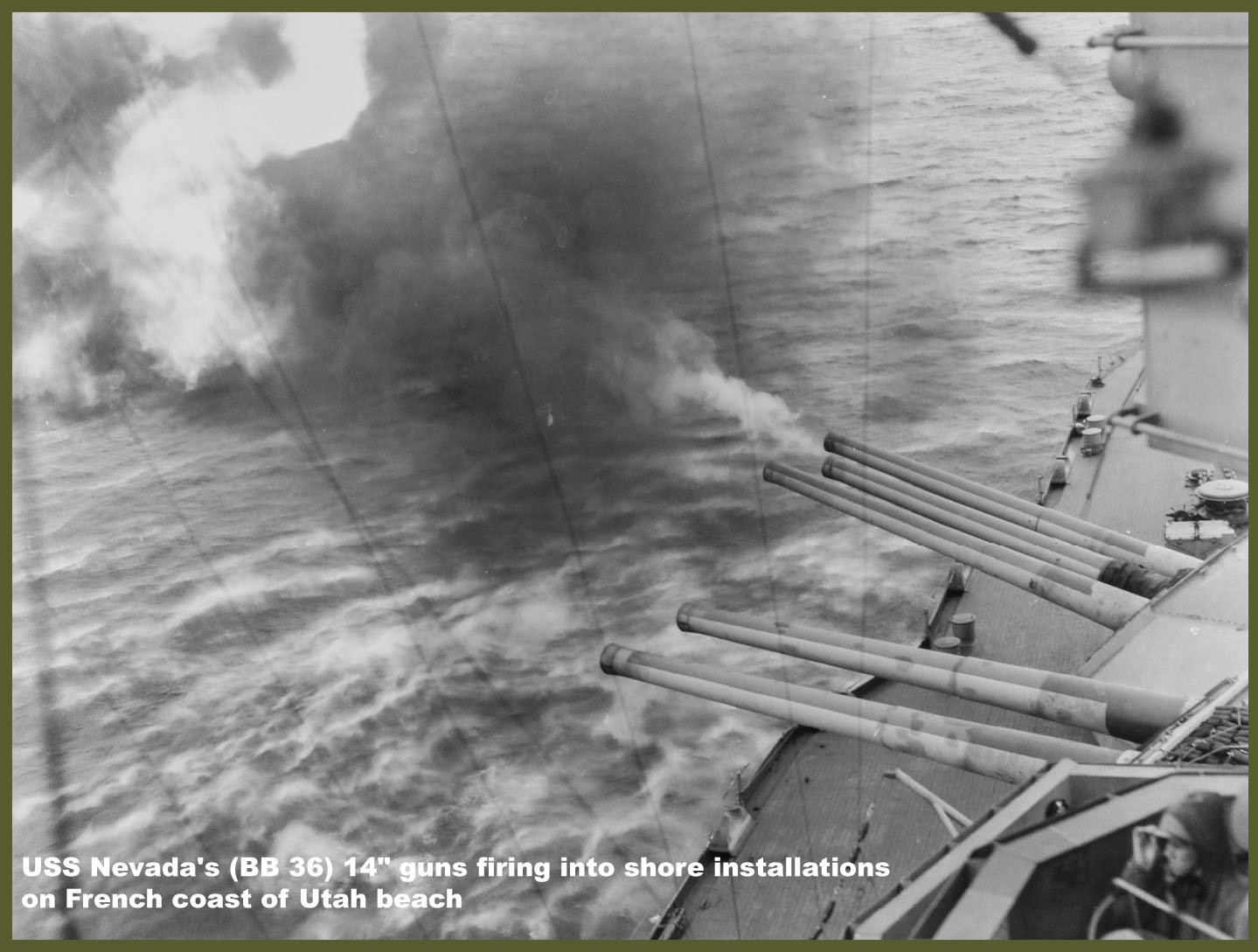
TACTICAL LESSONS LEARNED BETWEEN JUNE 6TH TO AUGUST 1ST, 1944
FIRE SUPPORT IN AMPHIBIOUS OPERATIONS
Despite the terrific pounding of the beach defenses by air and naval bombardment numerous beach defense installations remained intact to oppose the First U.S. Army landing.
To cover the gap in the air and naval fire support caused by the approach of the leading waves to the beach, artillery and tanks firing from landing craft were employed advantageously.
In addition, provision was made to land medium tanks with the leading waves by means of a special attachment which enabled the tank to float and be propelled through the water by its own power. These tanks, which were known as “DD” tanks, were a British development and were believed to be the answer to the question of how best to provide the assault waves with close tank support. In preparation for the operation two medium tank companies in each of three separate tank battalions were equipped and trained in their use.
For transport across the English Channel, the DD tanks were loaded four to an LCT. Upon approaching the beach, they were to be launched approximately 6,000 yards from the shore to swim in under their own power and timed to touchdown with the leading waves of assault craft.
In the battalions supporting the assault of the 16th Infantry Regiment of the 1st Infantry Division on Omaha Beach and the 8th Infantry Regiment of the 4th Infantry Division on Utah Beach, the tank battalion commanders concerned realized the futility of trying to negotiate the rough water and landed their tanks by beaching the landing craft which carried them.
It is to be noted that Admiral Moon of Force U (Utah Beach) influenced the tactical decision of the tank battalion commanders.
Since tank support for the leading waves was considered essential to the success of an amphibious assault reliance had to be placed on bringing tanks ashore in LCTs until such time as a device could be developed more reliable than the DD Tank.
There was no question to the necessity of having available high velocity, direct fire weapons to assist in the reduction of fortified positions unscathed by the preparatory drenching.
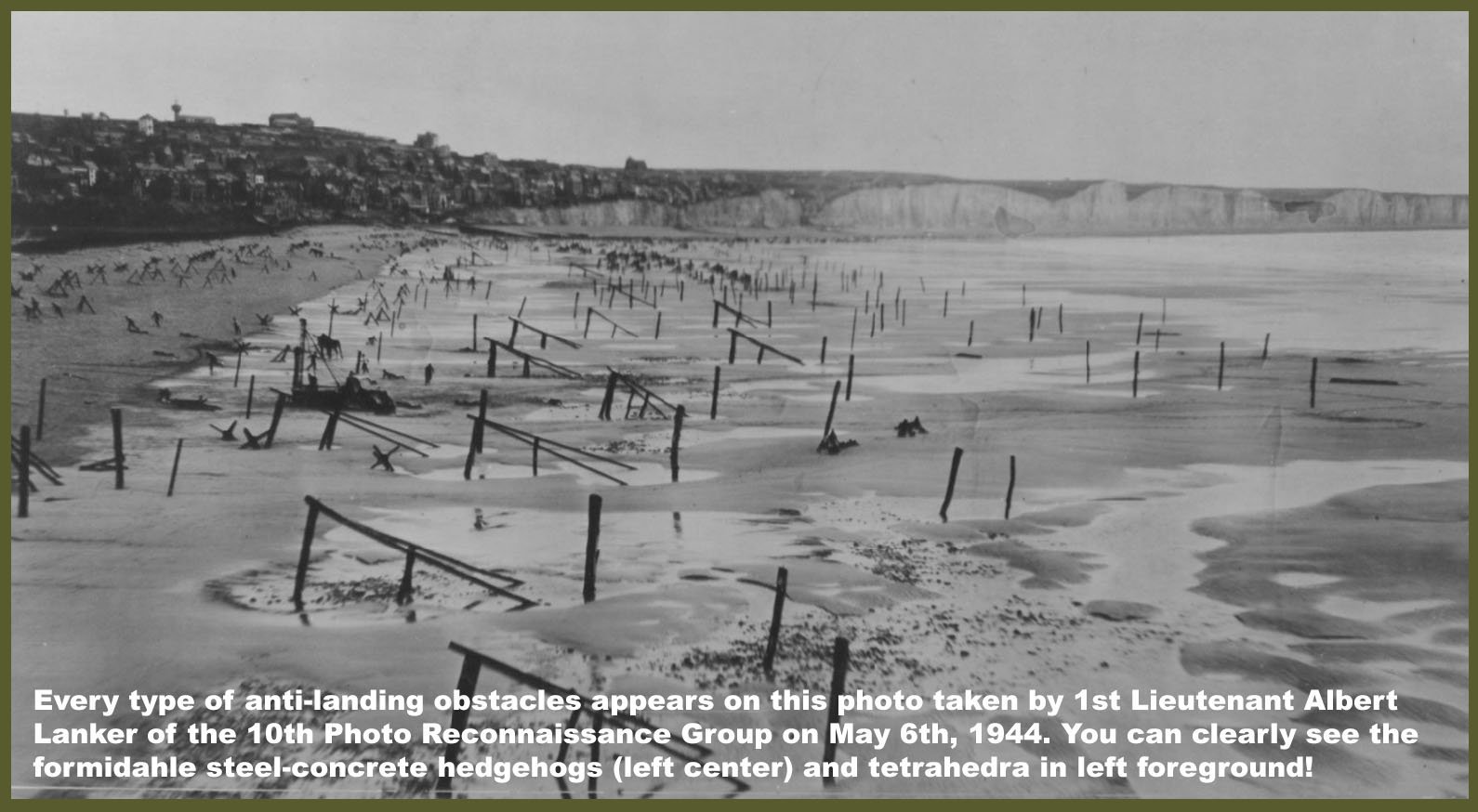
TACTICAL LESSONS LEARNED BETWEEN JUNE 6TH TO AUGUST 1ST, 1944
CLEARING THE BEACHES
During training exercises conducted prior to the invasion, it was emphasized repeatedly that the assault teams must clear the beaches rapidly and pass through the beach defenses as quickly as possible in order to establish positions inland in depth, leaving the beach defenses to be mopped up by the support waves.
Approximately 14,000 men of the First U.S. Army were trained at the Assault Training Center west of England to master the amphibious landing techniques and learn how to destroy the Atlantic Wall.
This included the Rangers with the objective of climbing the cliffs under enemy fire as quick as possible and paratroopers of the 82nd and 101st Airborne Divisions mastering the neutralization of German batteries.
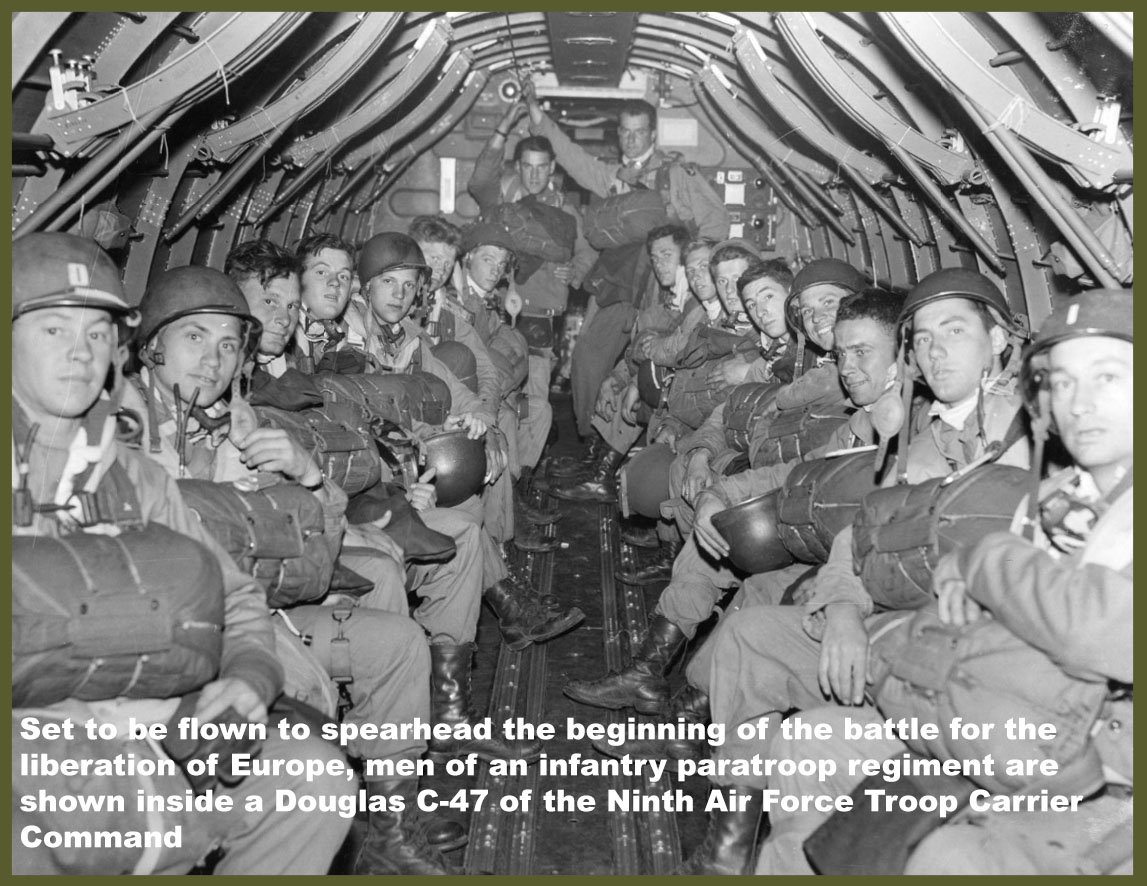
TACTICAL LESSONS LEARNED BETWEEN JUNE 6TH TO AUGUST 1ST, 1944
AIRBORNE OPERATIONS
In connection with the airborne phase of the operation there are several points we believe deserve a comment.
That the operation was a success and contributed materially to the rapid reduction of the Utah Beach defenses and expedited the establishment of a deep beachhead line is unquestionable.
Prior to the operation it was thought that an airborne landing at night in the presence of the enemy would be extremely hazardous. On the contrary, the devastating effect on the enemy more than compensated for the loss of some of the First U.S. Army men before they could use their weapons and the disruption of the First U.S. Army plans due to a dispersed drop.
The principal causes for the dispersed drop pattern were cloud formations, flak, and faulty navigation by some of the pilots.
Under the conditions imposed in an operation of this type, the initial effect of airborne troops resulted largely from the aggressive action of small groups thoroughly briefed for the missions which it was desired to accomplish.
The preparation of plans for the employment of an airborne division had to take into consideration the fact that the division couldn’t hope to function as such before 24 hours after landing.
In addition, plans for the employment of airborne units had to be provided for their prompt relief by ground units. This was one of the missions of the VII Corps on D-Day.
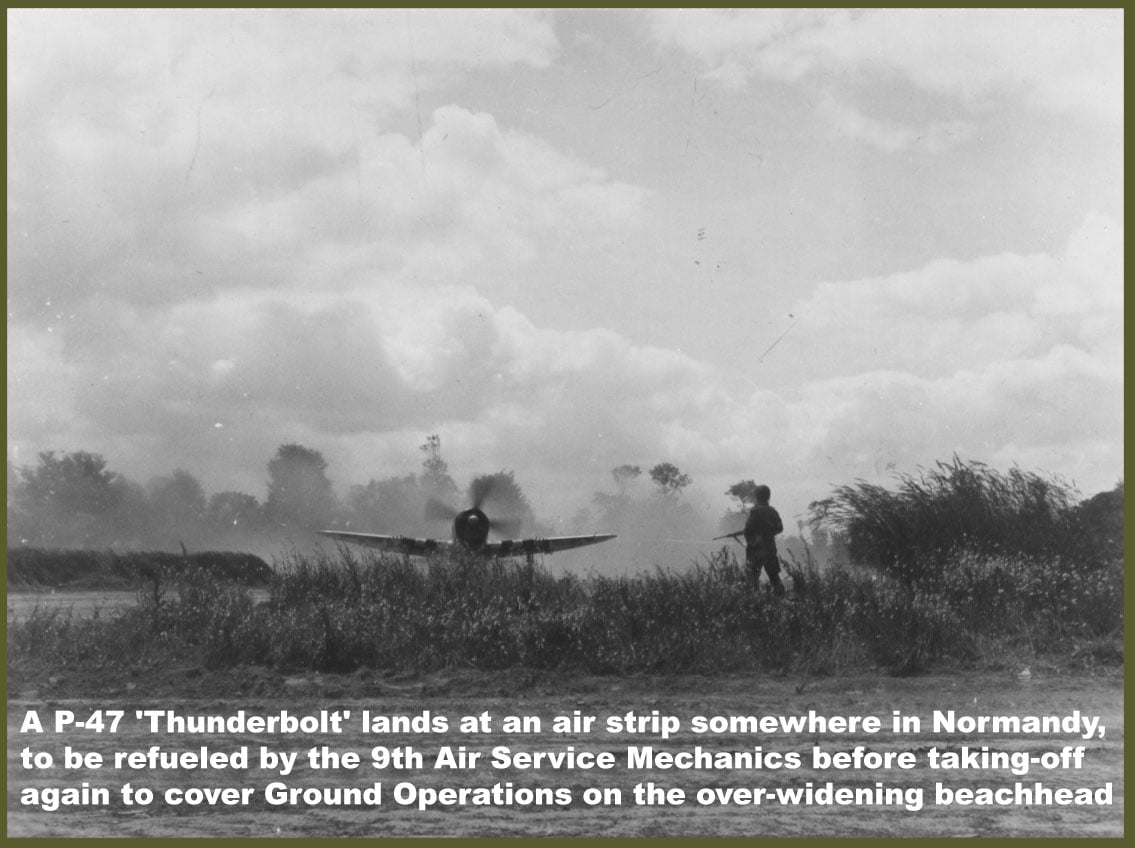
TACTICAL LESSONS LEARNED BETWEEN JUNE 6TH TO AUGUST 1ST, 1944
AIR-GROUND COORDINATION
In no other operation had air support of the ground plan been utilized to the extend developed in this campaign.
The careful attention given to methods of recognition, selection of air and ground staffs, and training during the preparatory phase reaped a bountiful harvest of excellent results.
Ground troops and pilots were thoroughly indoctrinated in air-ground recognition and identification.
Air staff officers in corps and in the army and air liaison officers were carefully selected and required to undergo a comprehensive course in the capabilities and limitations of support aviation and the technique to be employed to obtain the maximum benefits therefrom.
Throughout the entire operation the closest possible coordination between the First U.S. Army and that of the Ninth Tactical Air Command was accomplished by the simple expedient of placing both the Air Staff and the air representatives of the ground staff under the same roof.
Nothing new was developed to improve air-ground recognition and identification; the practicability of the use of fluorescent-colored panels by ground troops to mark forward positions was firmly established.
It was found that care had to be exercised in the use of these panels to ensure that they were displayed by front line elements only and not by units in the rear of the forward positions in order to avoid confusing pilots attempting to determine the exact position of leading units.
The display of yellow or orange smoke by ground troops to mark front lines in the long run proved it was not practicable nor that it was a method considered favorably by the ground forces since it tended to disclose positions to hostile artillery and mortar fire.
On the other hand, the use of colored smoke by artillery to mark targets for air bombardment proved to be entirely successful and was accepted universally as the best means available for the job.
In planning for air support missions, the ground forces had to furnish the air forces detailed and complete information concerning the air objectives to include a statement of the effect desired.
The timing of the air attack was to be carefully coordinated with the scheme of maneuver and overall fire plan. An example of close coordination of air support and ground fire is exemplified by the following plan which was employed successfully on numerous occasions.
- Prior to the air attack, the artillery placed heavy fire on the target to reduce air losses from flak.
- Upon completion of this preparatory fire and just prior to the arrival of the planes, the artillery marked the target with colored smoke.
- The artillery then withheld its fire until the bombing was finished at which time the artillery resumed firing to cover the advance of the infantry held outside the danger area during the bombing.
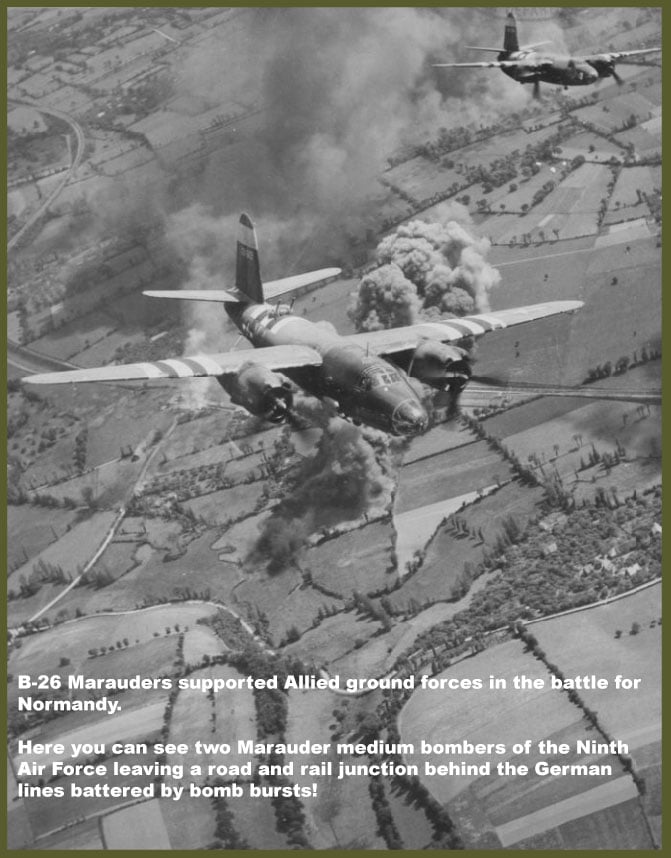
TACTICAL LESSONS LEARNED BETWEEN JUNE 6TH TO AUGUST 1ST, 1944
AIR SUPPORT IN GROUND OPERATIONS
Although normally it was a wasteful use of air power to bomb targets within range of supporting artillery, in some cases a requirement existed for air support against targets within artillery range.
The tremendous blast of the 500 lb. and heavier bombs was very effective against highly organized defenses and casemated positions. Near hits may tip the casemates off level or pile dirt in front of the port thus neutralizing the gun and the blast effect may kill or stun the crews and damage fire control equipment.
The guns were always to be neutralized during the air attack, the accuracy of the bombing being the determining factor in the duration of the period of neutralization.
The nature of the objective, not the ability of the artillery to reach it, determined whether air support was to be utilized or not.
To secure the best results, air bombardment was not to take place at too great a distance from the attacking troops in order that the defensive positions could be reached before the defenders had had an opportunity to recover and to man their positions.
Excellent results were obtained when air bombardment took place with the assaulting troops not more than 1,000 yards from the target, prepared to move in rapidly upon completion of the bombardment.
Since even this limited advance required valuable time, the target had to be covered with artillery fire after the bombardment, lifted on call from forward observers or at a prearranged time as the infantry closed in.
As a prelude to the penetration west of Saint-Lô in Operation COBRA heavy and medium bombers in conjunction with fighter-bombers and artillery fire were utilized in an elaborate prearranged fire plan to pulverize the area selected for the breakthrough.
This prearranged fire plan was highly successful and contributed in large measure to the success of the assault; however, certain features in connection with the use of heavy and medium bombers required further study that will later on in time influence General Eisenhower.
- The bombing target consisted of an area three and one-half miles long and 2,500 yards deep.
- The longer axis of the target was east and west, and the area was bounded on the north by the straight, broad Saint-Lô – Périers Road.
- In addition, the northern boundary was marked with red artillery smoke.
- The plan called for fighter-bombers to attack a 300-yard strip along the northern edge of the strip from H-75 minutes to H-60 minutes.
- From H-60 minutes to H-Hour the entire area was bombed by heavy bombers.
- Following the heavy bomber attack the fighter-bombers again attacked the forward edge of the area from H-Hour to H+15 minutes followed by medium bombers which attacked the southern half of the target from H+30 minutes to H+75 minutes.
- The fighter-bombers approached the target from the east and flew parallel to the front during the attack whereas the heavy and medium bombers came in from the north and flew perpendicular to the front during the attack.
- Ground troops were withdrawn behind a line twelve hundred yards north of the target.
- However, some divisions suffered casualties from heavy and medium bombers dropping their bombs short.
The inaccuracy of some of the heavy and medium bombers may be attributed to two factors:
- The smoke and dust raised by the first bombs dropped drifted to the north of the target and succeeding waves of bombers appeared to use this smoke and dust as a target rather than adhere to the designated bomb release line.
- Other formations of heavy bombers appeared to confuse the Saint-Lô – Périers road with another road approximately 2,500 yards north of and nearly parallel to it.
For the armored divisions pushing through the gap following the penetration of the enemy’s position west of Saint-Lô, a plan for armored column cover by fighter-bombers was developed and used which produced results far beyond all expectations.
In this setup four fighter-bombers armed with fragmentation and 500 lb. bombs flew continuously ahead of each advancing armored column. Liaison was maintained by additional air support personnel riding in the forward tanks of the column. Communication between air and ground, including tank battalion commanders, air personnel riding in tanks and between division and corps air support party officers, was maintained by means of VHF radio.
With this arrangement, very close coordination was obtained by the tank-air team.
Using the planes as their eyes to give advance warning of impending threats and detailed information on the enemy’s disposition, the armored columns were able to advance more boldly and aggressively.
In addition, the planes were available as a weapon to attack targets appearing in the operating sector of the tank column. In the event the target was too large to be bombed successfully by the four planes supporting the armored column, request for additional planes was immediately radioed to air operations by the flight leader. In the meantime, the flight leader-initiated action against the target!
The results obtained by the employment of the tank-air team in mobile, fast-moving situations were recognized as being an outstanding achievement in air-ground cooperation and represented the development of an unbeatable combination.
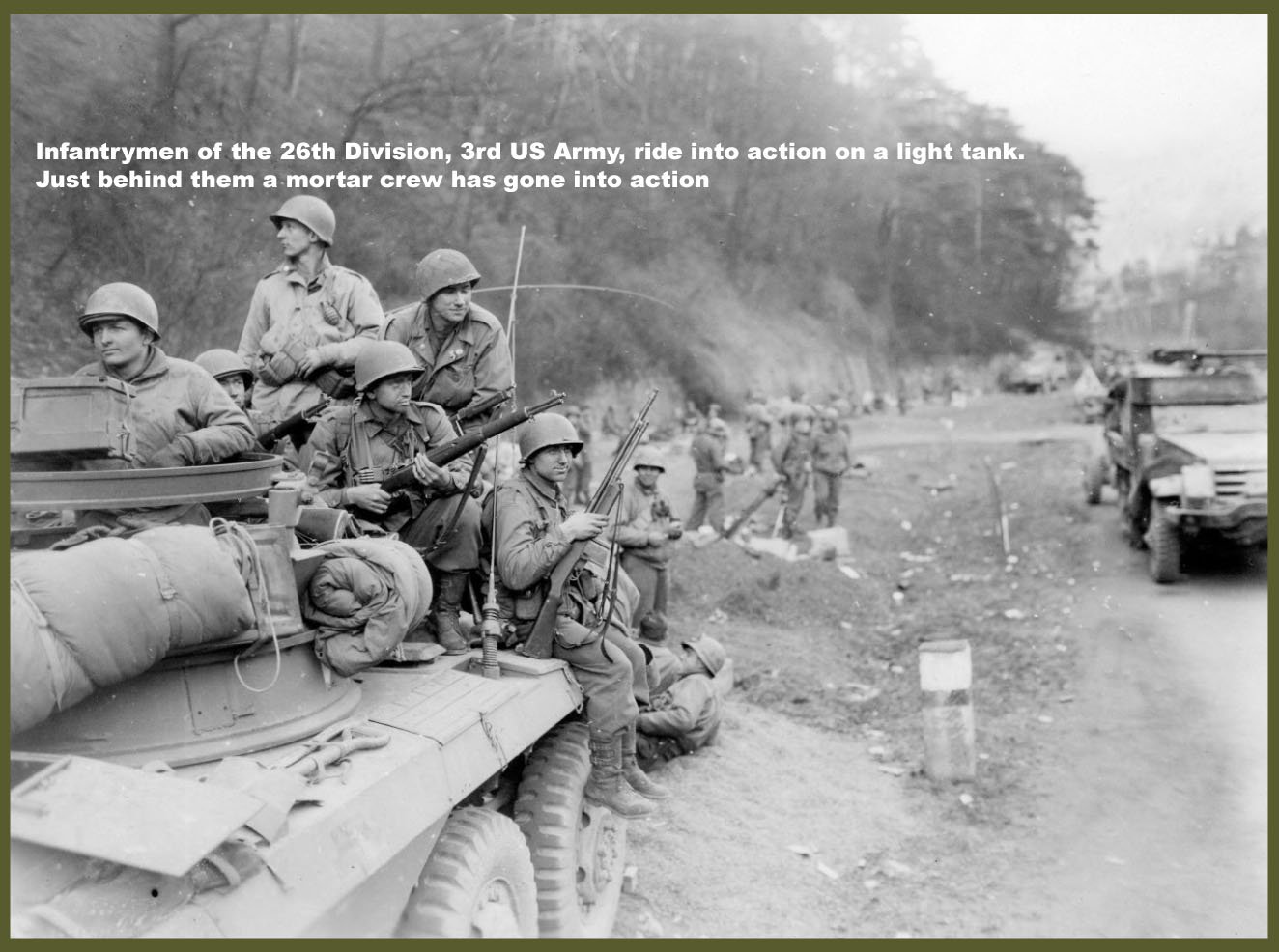
TACTICAL LESSONS LEARNED BETWEEN JUNE 6TH TO AUGUST 1ST, 1944
TANK TRAINING AND COORDINATION
Initial operations in Normandy indicated that insufficient training had been conducted in infantry-tank cooperation prior to entry into combat. Whereas the infantry-artillery doctrine was by now firmly established and adequate training was conducted to ensure the placing of a well-knit infantry-artillery team on the battlefield, the infantry-tank team required more attention in the training period than was now provided for.
Many of the First U.S. Army infantry commanders did not possess sufficient knowledge of the proper employment of tanks as an infantry support weapon and insufficient opportunity was given to the infantry division in training to become familiar with and work with the separate tank battalion.
Since the separate tank battalion was considered as a normal division attachment provision had to be made for “marrying up” an infantry division with a tank battalion during the training period to correct the deficiencies noted above.
The development of operational procedures and techniques between the infantry and close support tanks must not be left until arrival in the combat zone.
Insofar as the availability of tank battalions would permit, it was for the First U.S. Army common practice to attach initially one tank battalion to each infantry division. Thereafter, this tank battalion continued to be associated with the same infantry division wherever practicable.
In the smaller units, a satisfactory solution of the problem of liaison between tank and infantry was found to be in the assignment by the infantry company commander of one rifle squad to work with the tank platoon at all times. The plan called for the rifle squad to accompany the tank platoon in close country, protect its flanks, reconnoiter routes of advance and furnish information to the tank platoon by visual signaling or other means.
The use of command channels for the transmission of instructions from infantry to tank commanders was found to be impracticable in some cases as it frequently did not provide sufficiently close liaison.
Several means of direct communication between the infantry and tanks were tried with some success; namely, a microphone or telephone on the outside of the tank connected with the intercommunication system of the tank, pyrotechnic, smoke grenades and pre-arranged hand signals.
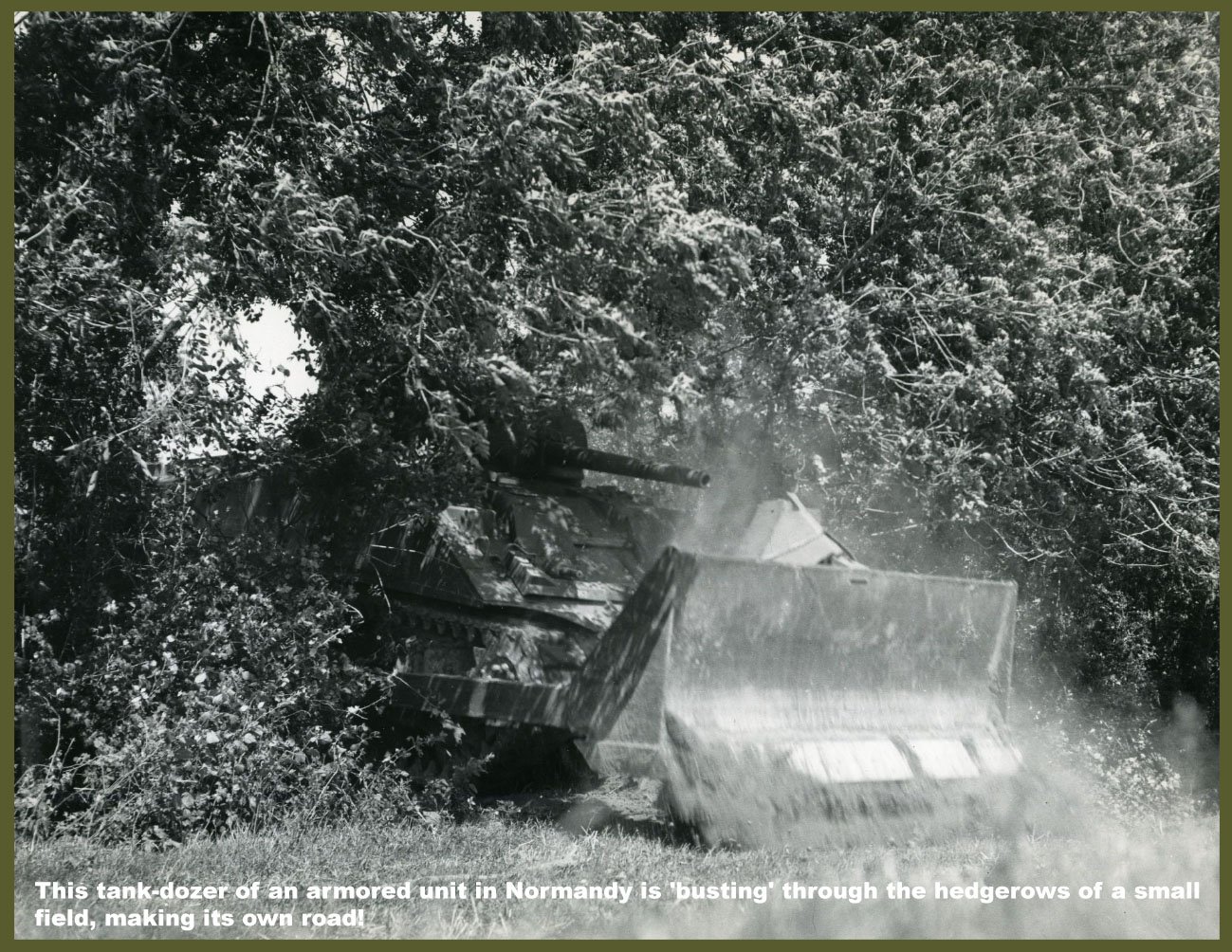
TACTICAL LESSONS LEARNED BETWEEN JUNE 6TH TO AUGUST 1ST, 1944
EFFECT OF HEDGEROW TERRAIN ON INFANTRY TACTICS
Since all of the action covered by Normandy American Heroes book: First United States Army Cross Channel Attack Operations occurred in the “bocage” or hedgerow country of Normandy, we considered appropriate to included herein the outstanding lesson learned.

















